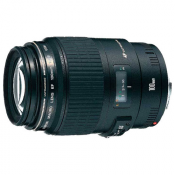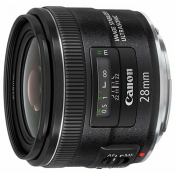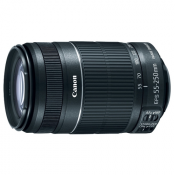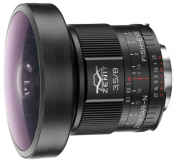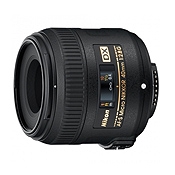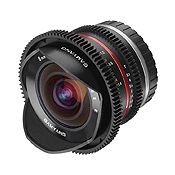Canon EF 50mm f / 1.8 STM
Short review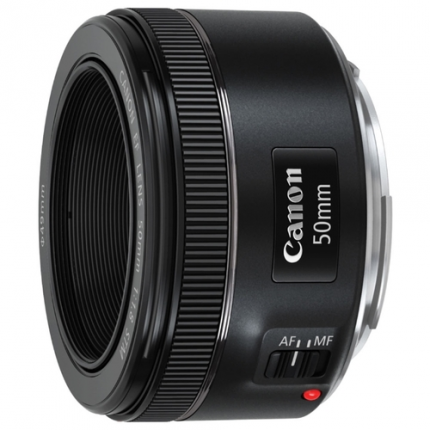
Selected in the rating
5
Best rating
lenses for Canon cameras
Autofocus - For Video - Type: Standard
Buy Canon EF 50mm f / 1.8 STM
Canon EF 50mm f / 1.8 STM Specifications
Yandex.Market data
| Main characteristics | |
| Lens type | standard |
| Focal length | 50 mm |
| Diaphragm | F1.80 |
| Minimum aperture | F22 |
| Mount | Canon EF |
| Auto focus | there is |
| Design | |
| Number of elements / groups of elements | 6 / 5 |
| Aperture blades | 7 |
| Dimensions (D x L) | 69.2 x 39.3 mm |
| Weight | 160 g |
| Shooting parameters | |
| Closest focusing distance | 0.35 m |
| Additional Information | |
| Filter thread diameter | 49 mm |
| Features: | smooth focusing STM when shooting video |
Opinions from the Canon EF 50mm f / 1.8 STM
Yandex.Market data
Advantages:
Great continuation of the old man 50 1.8 II. A workhorse for ridiculous money. Soap on the open? Didn't notice. Brad. Sharp enough, at least on FF Mark3. 50 1.4 nervously smokes on the sidelines. Excessive sharpness is not needed for it. Do you want to cut? Welcome to Sigma Art 1.4, open-razor, better than native elek at times. Only clients spit on such harshness. Sharpness guys for architecture and landscapes. Vignette? So this is it. Without a vignette, mostly architecture and landscape. And it's strange. In 80% of treatments, people specially sculpt vignettes in FS. For video? Well, if you are shooting video, then please visit a series of specialized optics. For the rest is self-indulgence. Sharpness slightly drops to the edges? This is a muddle for those who usually do not shoot, but examine the sharpness. Do you shoot portraits with edges? I'll make a reservation right away that there is a large elek park, so I understand what I am writing about in this case for 25 years already.
Disadvantages:
Everything is expected
Comment:
Take and shoot.
November 10, 2015, Vidnoe
Advantages:
All 5 plus.
Disadvantages:
The proboscis moves out.
Comment:
If someone tells you that the pictures from him are not very good, "throw a stone at him."
September 3, 2017, Moscow
Advantages:
Affordable Reliable, you don't have to worry about damaging the mechanism like with 50mm f / 1.4 USM Mine was well adjusted Nice bokeh Gives a vignette on full frame, but here according to the situation. Somewhere it gives artistry, but somewhere problems)) In general, the vignette is found on more expensive fifty dollars, but 50 \ 1.8 is most susceptible to it. Chromatite, but this needs to be specially increased up to 100% and scrutinized. Working open diaphragm. moreover, on the open or close to the open, probably the most interesting and eye-pleasing photos are obtained. Soft, nice picture, razor sharpness probably starting from F4 Very tenacious focus and makes very little noise
Disadvantages:
I am missing the focus scale and IR mark. Because of this, I often think about replacing, but there is nothing to change for! Or high price, or bulkiness, or outdated glass. If there was a mechanical binding of the focusing ring, it would still be possible to come up with something.
Comment:
I bought it for crop, I immediately felt the quality of the picture. But on the crop, the viewing angle is quite small and it was very difficult for me to apply it, it was a narrow-focus lens. After buying a full-frame camera, this lens is always with me, more than 50% of all photos are taken with it. I love that it gives a juicy picture, correct perspective, compact and unrealistically versatile.
18 November 2018, St. Petersburg
Advantages:
I use 70d on crop. - An excellent compromise for amateur use in all respects (see comment). - Aperture ratio. - Price. - Speed and accuracy of autofocus at all distances except the closest one. - Boke is finally round, even and crisp. Reading reviews on different glasses comparable in focal lengths, I came across the fact that opinions are polar in this part: for fifty sigma, the blur is very smooth due to the large diameter of the lens, without clear boundaries (someone says - "expensive", someone - "oily, unexpressed"); Canon (50 f / 1.4, 85 f / 1.8) have clear circles on the contrary (for some - "super", for others - "technical, sharp"). So it's a matter of taste, by and large. On the subject, I like the bokeh. - On the crop, the face is not round, the shoulder portrait looks very dignified. Shows you almost everything you expect from DSLR photography.
Disadvantages:
- The autofocus drive is buzzing - it can be heard in the video in a quiet room, it does not stand out in a noisy one. - The trunk cannot be pushed in when the device is off or asleep - the focusing ring is driven by an electric drive. - Extremely uncertain and slow autofocus in indoor lighting at closest distances (attempts to make a pseudomacro from 35 cm are tiresome).
Comment:
I used all the budget Canon analogs from in one volume or another (only on the crop). On hand were these: 40 f / 2.8 stm, 50 f / 1.8 II, 85 f / 1.8. Fifty 1.4 tested 50 f / 1.8 stm together in the store, deciding what to take. In the end, he took the younger one. If you briefly compare with all: Canon 40 mm - "forty" I still have, since the smallest and almost always with me, helps out when I need aperture. The portraits are larger than waist-deep from him not very much, the background blur is not very pronounced. In fact, an incomprehensible glass, captivates only with its compactness, otherwise it is inferior to fifty dollars. The old 50 1.8 - his trump card is the price. The picture, apart from the boke, is identical. For other parameters - FAIL. Canon 85 1.8 - if you are sure you are looking for the uncompromising capitalized PORTRAIT, DON'T LOOK AT POLTENNIKI. Of the relatively budgetary 85, it will suit you completely. Cropped photos (from full-length to face portrait) come out gorgeous. 50 mm is not even close here. Canon 50 1.4 - I tried, shot, felt - I did not understand why it is steeper than 50 1.8 STM, except for almost three times the price)) The 1.4 aperture is soapy, the picture is practically the same, the autofocus is just as insecure near, and as accurate in the distance, the trunk also goes out and it also moves in with additional operations, the focusing motor is clearly audible in the video, the focusing is not smooth, but in jerks, which is felt in the video, and in general the USM drive in this glass is kind of jittery, not like in the 85-ke. Of the pluses, there MAY BE only a larger resource, but I personally don't need it. So in the end - 50 1.8 STM, I hope happily and for a long time.
January 31, 2017, Nizhny Novgorod
Advantages:
Cheap, but looks and feels expensive in the hands, unlike its predecessor EF 50mm f / 1.8 II, from which it just bears cheapness; the diaphragm, covered for a couple of stops, still retains an almost round shape without noticeable corners, unlike its predecessor, in which it became clearly pentagonal (this can be considered a "feature", but in most cases a round shape is preferable); has a small, in comparison with analogs, minimum focusing distance, 35 cm; The STM autofocus drive is fast and quiet, while the focusing accuracy, if not perfect, is at least significantly better than its predecessor; the quality of the image is many times higher than its price, if at f / 1.8 there is a small "software" (just small, most for portrait photography), then already at f / 2.2 the sharpness is excellent; the front lens recessed into the case is perfectly protected, and in most cases there is no need for a hood; the lens is compact and lightweight; suitable for full frame, and will look appropriate even on 5DS R.
Disadvantages:
If you want, you can get to the bottom of the little things, but this is the cheapest (!) Lens in the entire EF line, it makes no sense to expect the L-series bells and whistles from it.
Comment:
I often heard complaints about the "non-standard" thread for 49 mm filters, such as because of it you have to buy new filters. Stupidity, the adapter from 52 mm to 49 mm costs a penny. At the same time, 49 mm filters are somewhat cheaper than 52 mm. There are also complaints that the turned off lens cannot be folded down to its minimum size. Nonsense, you can. Just gently, without distortions (either evenly on both sides of the lens unit, or attach the cap and press on its center) press the lens unit and it will slide inside. STM allows you to do this without fear of damaging anything, because the lens block is held in a given position not by mechanical friction, but by a magnetic field (there are permanent magnets, so that the hold is maintained even in the off state).
December 2, 2016, Moscow
Advantages:
1. High-aperture lens 1.8 is enough for my tasks 2. Lightweight, which is very pleasing. 3. The price suits me perfectly 4. sharp and bokeh very pleasing to the eye
Disadvantages:
When the aperture is open, it misses the focus, I photograph at 600D. It also lacks flimsy material, so be careful with this lens.
Comment:
I bought it for shooting portraits on the open air, sometimes I use it for landscape photography, it copes with my tasks perfectly. If you want to change a standard lens or buy a high-aperture lens, then Canon 50mm 1.8 will be the best one.
6 January 2018, Moscow
Advantages:
1. Decent sharpness at open aperture, starting from about f2.5-2.8 the picture already "rings" 2. More aperture blades than in the old version (7 vs 5), which means smoother bokeh without nuts 3. Metal mount 4. High-quality assembly, nice matte plastic of the body, light weight 5. Good AF performance under normal lighting (it still misses more often in the room, but not critical), I did not have to adjust, which cannot be said about sigma 17-50 f2.8
Disadvantages:
1. Outgoing trunk. After work, you constantly have to focus at infinity, or in manual mode, you can tighten the outgoing part, otherwise you can inadvertently damage 2. Not the fastest autofocus motor (for me personally, it's not very important, it's still not a reportage lens), and not completely silent when filming 3. I didn’t like the electronic focusing ring, it works rather slowly in manual mode 4. Poor bundle, no hood and cover included
Comment:
Cool budget lens in terms of price-quality ratio, I use it in tandem with 70D. Perfect for portraits and videos with shallow depth of field. The picture is nice, detailed, the colors are all right. Given its cost, you can close your eyes to some of the shortcomings.
October 3, 2017, Kopeysk
Advantages:
- lightweight - STM, which has become noticeably faster than 40 mm and 24 mm - price in dollars - round aperture - practically absent HA - bokeh on open "creative"
Disadvantages:
- strong vignette on the full frame - case material - thin, sonorous plastic - in vain they reduced the thread diameter - 52 mm more running, I had to order an adapter - f1.8 conditionally working - workmanship in detail
Comment:
alteration of the old plastic stub has long been requested and it has been successfully completed on all counts. I didn't buy the old one for many years, I didn't even want to pick it up. I bought this one without hesitation - as a high-aperture camera for a full frame it is it. 40 mm STM in terms of angle of view is definitely more versatile and I like it better, but 1.8 and 2.8 are already a difference) on open holes in the full frame, it slightly twists the background like helios. from nagging: on the open softit. on the crop it is acceptable and even suitable for portraits, but on the full frame, only the center is working.clamping up to 2.0-2.2 saves in most cases. I was unpleasantly surprised by the sloppiness during assembly - excess plastic peeled off around the rear lens - a thin strip of flash around the circumference. noticed and cleaned it off in time, before it was poured into the chamber.
October 26, 2015, Yaroslavl
Advantages:
1. good materials and no backlash, the metal mount is finally there. 2. slightly sharper than the plastic version, in fact this is due to the Canon Super Spectra coating and in fact the improvement in sharpness is barely noticeable, but the contrast in the backlight has increased. 3. Finally, a rounded diaphragm of 7 blades is installed, and the circles in the bokeh will always delight. This is really a breakthrough 5. focusing is faster due to the absence of yaw, and focusing on different objects in a small area (the length between them is, for example, 1 meter) is faster even than 50mm by 1.4 6. The hood was finally mounted directly on the body , and not on the trunk, which also pleases 7. The minimum focusing distance was reduced to 35 cm, a trifle, but nice.
Disadvantages:
1. Focusing in manual mode is carried out not directly, but through the STM drive, which affects the efficiency and speed, but the focusing is smooth and turning the light ring is a pleasure. But to push the trunk inside you have to turn on the camera. 2. Focusing is fast, but from mdf to infinity, the speed is slower than the plastic version and than the 50mm 1.4. 3. the body material would be denser, although this is no longer a bad thing.
Comment:
Fantastic plastic had to be updated and improved for a long time, and here Canon, I think, did an excellent job. The main advantage of course is the autofocus drive and almost no yaw. I would take for myself, of course, 50mm by 1.4, but I tried different versions of this glass and a large number of defects due to the incorrect operation of the ancient usm drive, it upsets, even a plastic half-glass gets more often. In general, half a STM of 1.8 is very happy, and he took his permanent place in the backpack
October 8, 2015, Kazan
Advantages:
Sharpness, weight, focusing speed, smooth pleasant bokeh, price !!!
Disadvantages:
The only thing that could be attributed to the shortcomings is a change in size when focusing, respectively, over time, dust will appear inside.
Comment:
I changed enough glasses to understand whether I like to shoot with glass or not. Of course he was the owner of the previous fifty. I can definitely say that Canon has again made an ideal lens in terms of price-quality ratio !!! In terms of tactile sensations, it lies much more pleasantly in the hand, the presence of a metal bayonet pleased me. But all these are trifles) The main thing is how he focuses and of course the drawing! Shooting with Canon 70D. I am very pleased with the focusing speed, accuracy and quietness (no annoying squealing). Now normal nice bokeh, not "nuts". At 1.8 softit, it becomes sharp from 2.0, at 2.2-2.8 it becomes very comfortable to shoot, sharp where needed. I took it for 7990 and I do not regret a penny spent, the main thing is that I am comfortable working with him, and the clients are happy with the result !!!
May 13, 2017, Moscow
